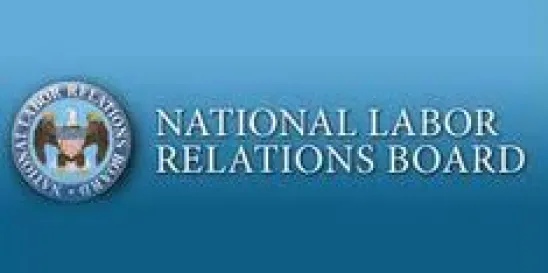In a much-anticipated rulemaking, the National Labor Relations Board (“NLRB” or “Board”) has established a new standard for determining whether two employers are joint employers of particular employees within the meaning of the National Labor Relations Act (“Act”). Under the final rule, published today, an entity may be considered a joint employer of another employer’s employees:
“if the employers share or codetermine those matters governing employees’ essential terms and conditions of employment. To ‘share or codetermine those matters governing employees’ essential terms and conditions of employment’ means for an employer to possess the authority to control (whether directly, indirectly, or both), or to exercise the power to control (whether directly, indirectly, or both), one or more of the employees’ essential terms and conditions of employment.”
The new standard for determining joint employer status will make it easier for the Board to find that two companies are joint employers obligated to bargain over essential terms and conditions of employment and liable for labor law violations.
History
As we previously covered, this new rulemaking was long in the pipeline. Back in December 2021, the Board announced in its regulatory agenda that it planned to engage in rulemaking on the joint employer standard; it affirmed an intent to revise the rule in a June 2022 release; and it issued a draft of the new proposed standard in September 2022.
The new final rule overturns the previous standard established by the NLRB through its rulemaking authority in 2020, which provided that:
“An employer…may be considered a joint employer of a separate employer’s employees only if the two employers share or codetermine the employees’ essential terms and conditions of employment. To establish that an entity share or codetermines the essential terms and conditions of another employer’s employees, the entity must possess and exercise such substantial direct and immediate control over one or more essential terms or conditions of their employment as would warrant finding that the entity meaningfully affects matters relating to the employment relationship with those employees.” (Emphasis added).
In that 2020 rule, the Board further defined “essential terms and conditions of employment” to include “wages, benefits, hours of work, hiring, discharge, discipline, supervision, and direction.”
The new final rule returns to a standard established in Browning-Ferris Industries of California, Inc., 362 NLRB 1599 (2015). Prior to that case, an entity could be held a joint employer only if it exercised “direct and immediate” control over employment terms and conditions in more than a limited and routine manner. In Browning-Ferris, the Board relaxed that standard so as to extend joint employer status even to entities possessing an ability to control employment terms and conditions indirectly and even if the entity never actually exercised that ability.
The New Standard
The new final joint employer rule establishes that two or more entities may be considered joint employers of a group of employees if each entity has an employment relationship with the employees, and if the entities share or codetermine one or more of the employees’ essential terms and conditions of employment.
The most significant aspect of the new rule, and how it departs from the 2020 rule, is that an entity may be found to be a joint employer controlling the essential terms and conditions of employment whether or not such control is exercised (“reserve control”) and without regard to whether any such exercise of control is direct or indirect (“indirect control”).
The new rule also adds detail to the list of items considered “essential terms and conditions of employment,” which include:
- Wages, benefits, and other compensation;
- Hours of work and scheduling;
- The assignment of duties to be performed;
- The supervision of the performance of duties;
- Work rules and directions governing the manner, means, and methods of the performance of duties and the grounds for discipline;
- The tenure of employment, including hiring and discharge; and
- Working conditions related to the safety and health of employees.
In sum, an entity may be considered a joint employer if it has authority to control at least one of the above terms or conditions of employment. An entity’s “authority to control” may be found if the employer has direct, indirect, or reserve control over these terms.
The new rule goes into effect on December 26, 2023, which means it will only be applied to cased filed after that effective date. A summary fact sheet on the new rule is available here.
Takeaways
The Board’s new rule carries monumental implications for employers, particularly those engaged in business relationships where joint employment issues typically arise, such as with professional employment organizations, in the service of temporary staff, and in contractor-subcontractor, parent-subsidiary, and franchisor-franchisee situations.
In the case of a joint employer finding, an entity may have a duty to participate in collective bargaining for the other entity’s employees; may jointly or independently be responsible for unfair labor practices committed by either employer; may be subject to accretion (i.e., the process by which a union is permitted to add individuals to a bargaining unit without holding an election); and may face a greater likelihood that picketing by the employees in question would be held lawful.
The upshot is that the new rule makes a joint employer finding much easier.




 />i
/>i
